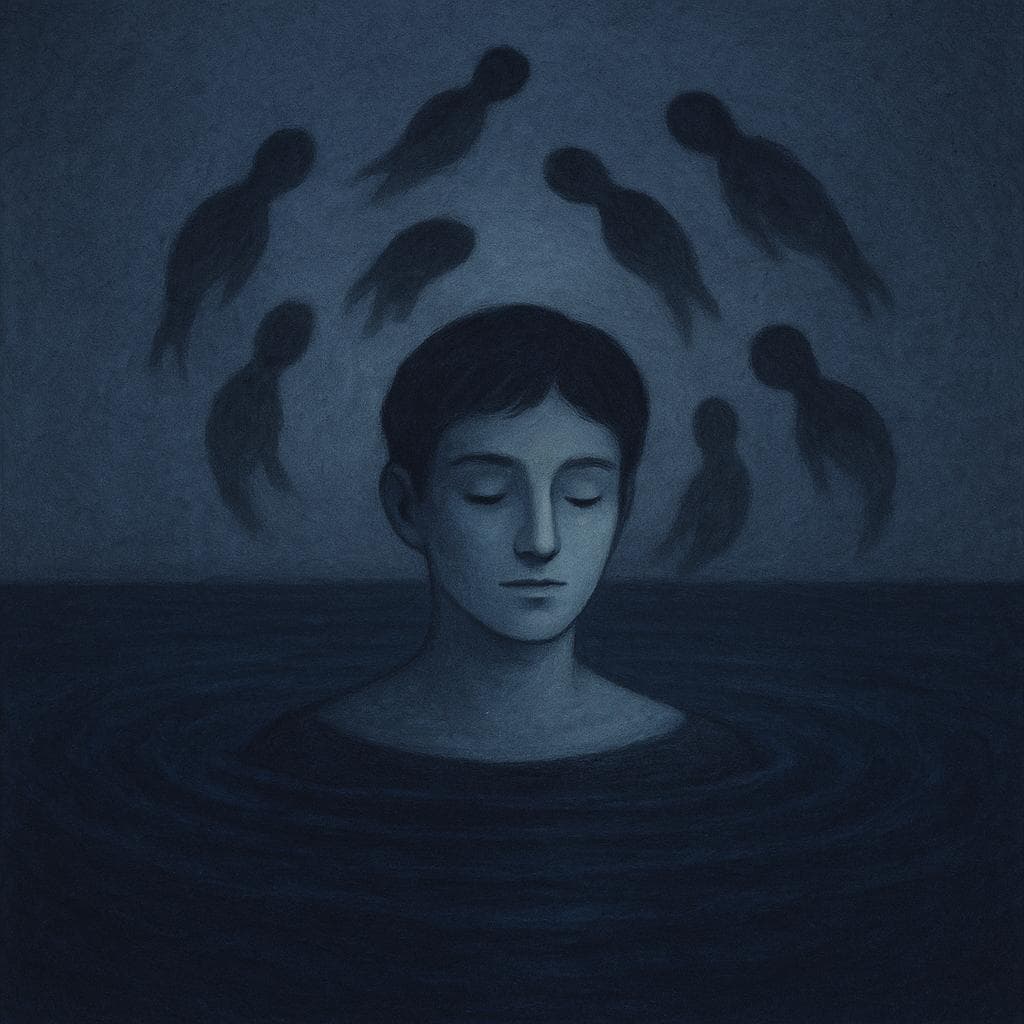"Traté de ahogar mis penas, pero ellas aprendieron a nadar."
/trah-TAY deh ah-oh-GAR mees PEH-nahs, PEH-roh EH-yahs ah-pren-DYAY-rohn ah nah-DAR/
I tried to drown my sorrows, but they learned how to swim.
💡 Understanding the Quote
"Traté de ahogar mis penas, pero ellas aprendieron a nadar."
🎨 Visual Representation

The quote visualizes sorrows as resilient forces that can't simply be pushed away.
🔑 Key Words
📖 Context
Widely attributed to Mexican artist Frida Kahlo (1907-1954). While it perfectly encapsulates the spirit of her life, there is no definitive written proof that she originated the phrase. It has become inseparable from her legacy.
📝 In Action
Anoche salí para olvidar mis problemas, pero hoy me siento peor. Es como la frase de Frida: traté de ahogar mis penas, pero aprendieron a nadar.
B2Last night I went out to forget my problems, but today I feel worse. It's like Frida's phrase: I tried to drown my sorrows, but they learned to swim.
Vi una camiseta con la cita 'Traté de ahogar mis penas...' y me pareció un resumen perfecto de la resiliencia.
B2I saw a t-shirt with the quote 'I tried to drown my sorrows...' and it seemed like a perfect summary of resilience.
✍️ About the Author
📜 Historical Context
This quote is tied to the life of Frida Kahlo, an artist who endured immense physical and emotional suffering. After a near-fatal bus accident left her with chronic pain, and through a tumultuous marriage to Diego Rivera, her life became a symbol of enduring hardship. This phrase, whether she said it or not, perfectly captures her spirit of facing pain head-on because there was no other choice.
🌍 Cultural Significance
This has become one of the most famous quotes associated with Frida Kahlo, functioning as a modern mantra for resilience. It's incredibly popular on social media, art prints, and even tattoos. It resonates deeply with anyone who has faced persistent mental or emotional struggles, symbolizing the act of surviving and living alongside one's pain.
📚 Literary Analysis
The quote's power comes from personification—giving a human quality to an abstract concept. 'Penas' (sorrows) are not just a feeling; they become active beings that can 'learn to swim.' This transforms them from something you can act upon (drown) to something that acts for itself (learns), brilliantly illustrating the feeling that our problems have a life of their own.
⭐ Usage Tips
Expressing Persistent Struggle
Use this quote in a personal, reflective context to convey that you've tried to move on from a problem, but it continues to affect you. It's both poetic and deeply relatable.
Acknowledge the Source
When using it, it's common to preface it with 'Como decía Frida Kahlo...' ('As Frida Kahlo used to say...'). This shows you know its cultural association, even if the direct attribution is debated.
🔗 Related Quotes
✏️ Quick Practice
💡 Quick Quiz: Traté de ahogar mis penas, pero ellas aprendieron a nadar.
Question 1 of 2
To which famous Mexican artist is this quote most often attributed?
🏷️ Categories
Themes:
Frequently Asked Questions
Did Frida Kahlo actually say this?
There is no definitive evidence, like a letter or diary entry, that she wrote or said these exact words. However, the sentiment so perfectly captures her life of chronic pain and emotional turmoil that it has become inseparable from her legacy.
Is this quote meant to be pessimistic?
While it sounds dark, most people interpret it as a statement of profound resilience. It's not about giving up; it's about acknowledging the enduring nature of one's struggles and, by implication, the incredible strength required to live with them.
